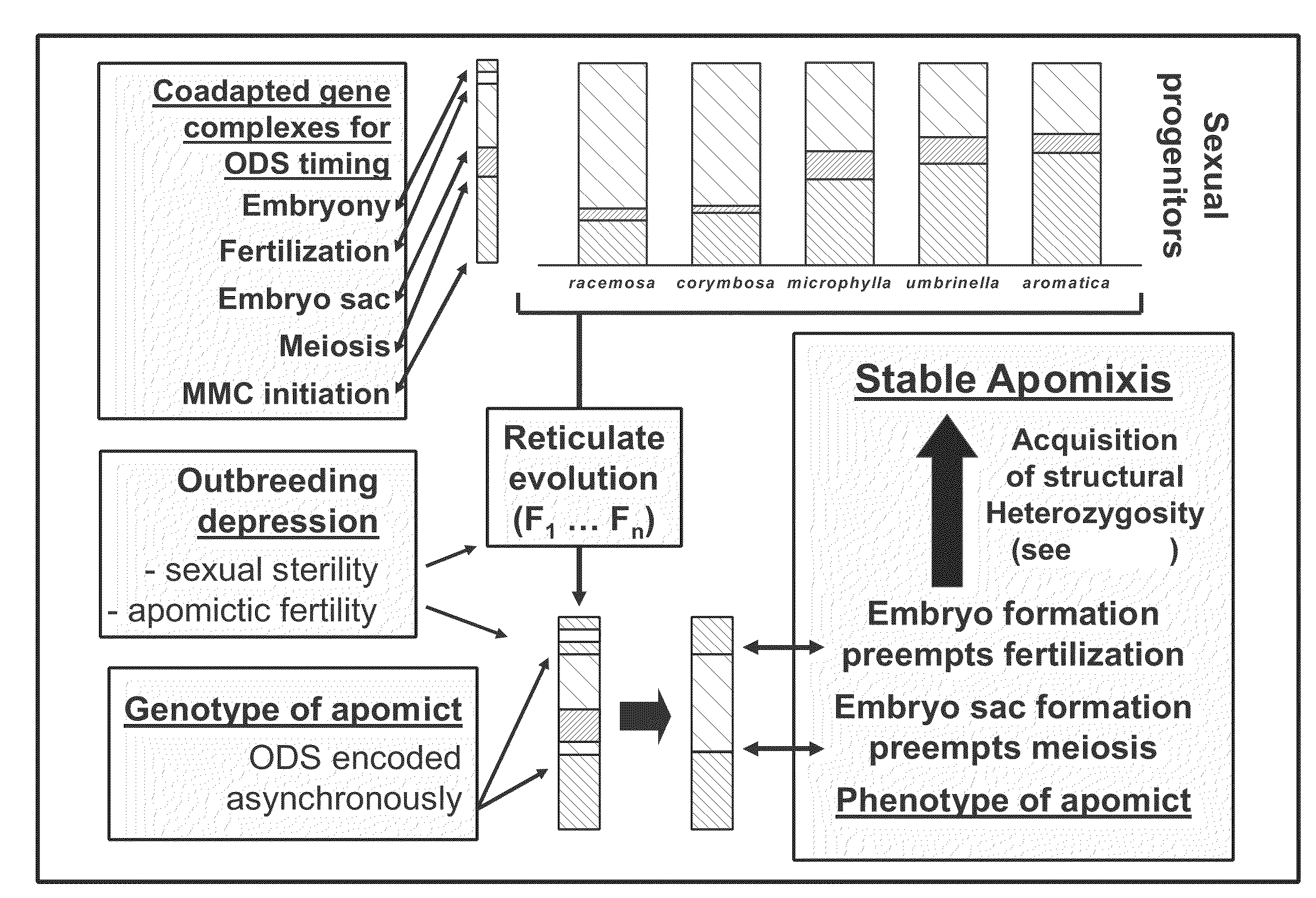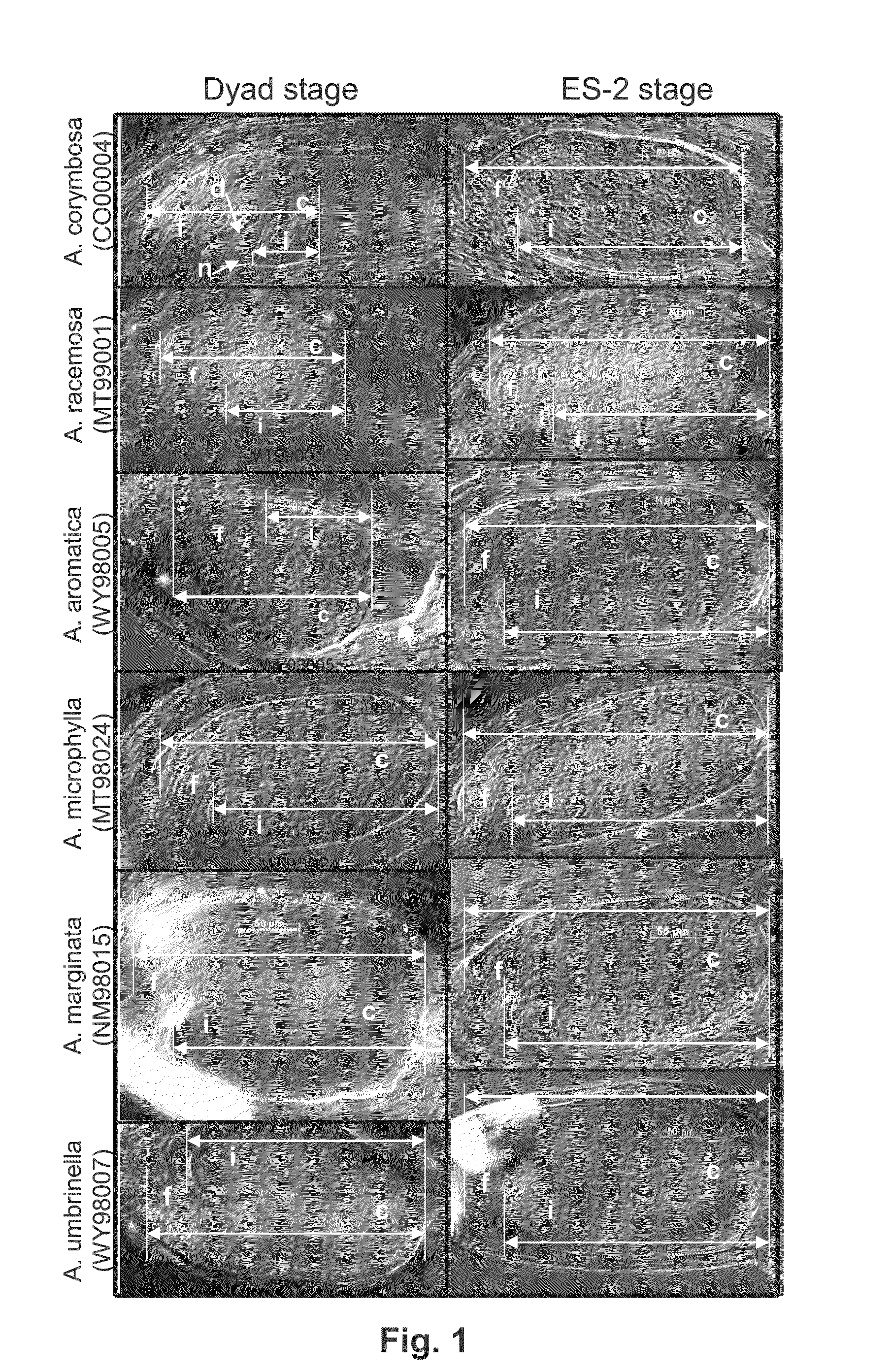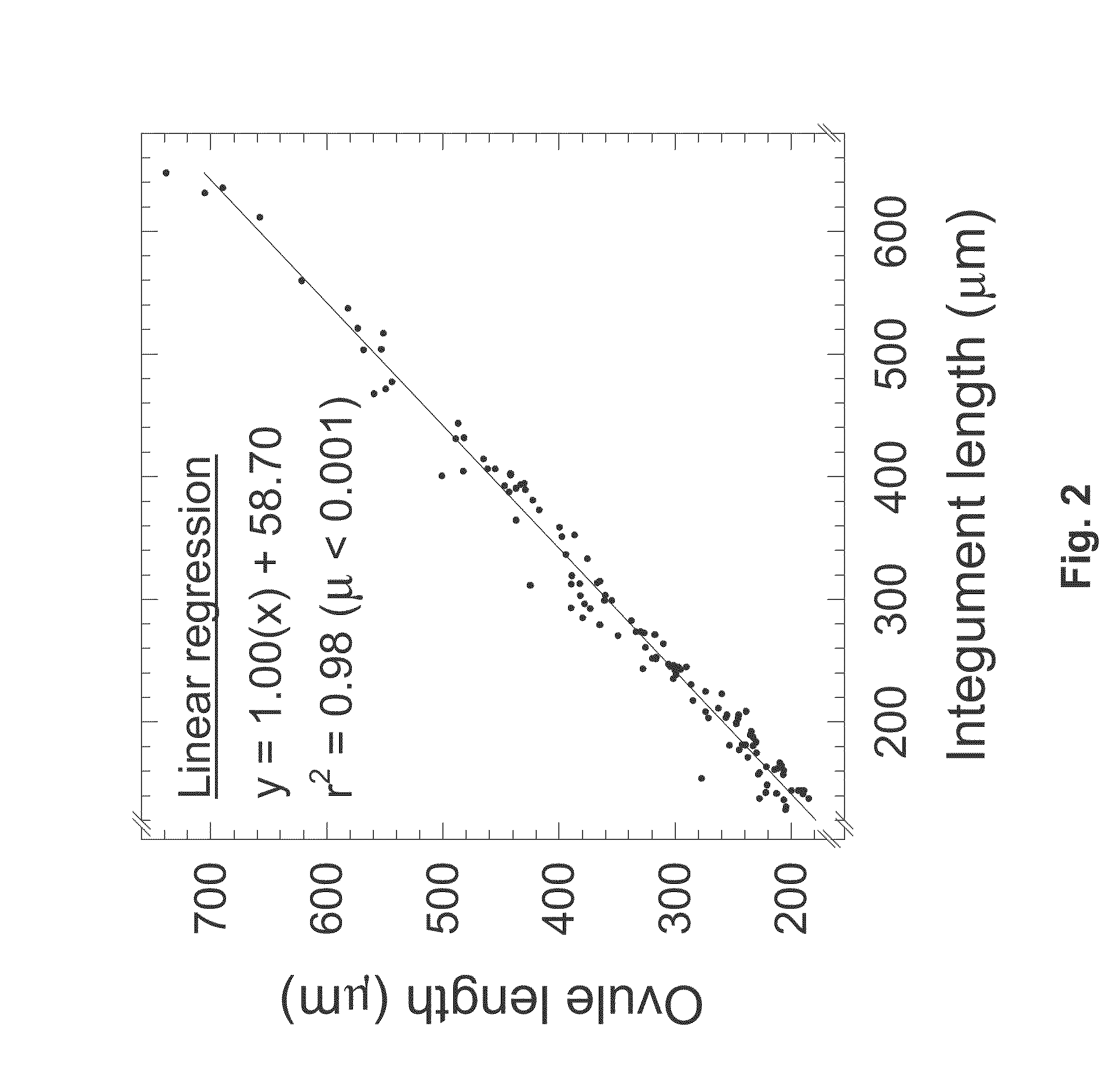Methods for increasing the frequency of apomixis expression in angiosperms
a technology of angiosperms and apomixis, which is applied in the field of increasing the frequency of apomixis expression in angiosperms, can solve the problems of high cost, limit the use of hybrid wheat seed to the very highest wheat production area, and prohibit world-wide conversion from inferior varieties to superior hybrids. to achieve the effect of enhancing genetic variability within individual plants
- Summary
- Abstract
- Description
- Claims
- Application Information
AI Technical Summary
Benefits of technology
Problems solved by technology
Method used
Image
Examples
example 1
Selecting Antennaria Lines from which Apomixis-Enhanced Plants May be Produced
[0172]Apomixis was first described at the embryological level in Antennaria alpina (Juel 1900). Antennaria (x=14) are dioecious, herbaceous perennials and are usually stoloniferous. Morphology-based cladistic analyses of 32 sexual diploid species coupled with analyses of sequenced internal transcribed spacer regions of nuclear ribosomal DNA (ITS-1 & ITS-2) indicated that Antennaria is composed of six clades (Bayer 1990; Bayer et al 1996). Apomixis occurs only in the Catepes clade, which contains 17 of the 32 sexual Antennaria species and sexual and apomictic polyploids ranging from 4× to 12× (Bayer and Stebbins 1987; Bayer and Minish 1993). All members of this group are stoloniferous and sexually dimorphic. Five geographically-divergent complexes of interbreeding sexual and apomictic Antennaria species (agamic complexes), A. alpina (L.) Gaertn., A. howellii E. L. Greene, A. parlinii Fern., A. parvifolia Nu...
example 2
Selecting Sorghum Lines from which Apomixis-Enhanced Plants May be Produced
[0176]There is evidence that low level facultative apomictic seed formation (up to 25%) has occurred in at least some Sorghum lines (Hanna et al 1970; Tang et al 1980; Schertz 1992; Bala Ravi 1993). To assess whether apomixis in these lines arose from hybridization, rather than fortuitous mutation, we tested the following null hypothesis: apomixis fails to arise in hybrids produced by crossing progenitors of known facultatively-apomictic sorghum lines. To our knowledge, such simple tests had not previously been conducted, i.e. conventional wisdom assumed that apomixis arose by mutation. Progenitors of two facultatively-apomictic Sorghum lines, ‘R473’ and ‘302’, were obtained. Progenitors of R473 are ‘IS 2942’ (a day neutral Kafir line) and ‘Aispuri’ (a short day Indian variety) (Tang et al 1980). Progenitors of 302 are ‘IS 3922’ and ‘Karad Local’ (Rana et al 1981). Additional lines totaling 20 S. bicolor, 14 ...
example 3
Characterizing GDS Variation in Sorghum Lines and Producing Plants that Express Apomixis
[0177]Pistils for cytological analysis were killed, fixed, cleared and observed using DIC microscopy as in Peel et al (1997a,b). Cytological data was obtained at the MMC, dyad, triad / tetrad, functional megaspore, 1-nucleate embryo sac, 2-nucleate embryo sac, 4-nucleate embryo sac, early 8-nucleate embryo sac, mature embryo sac, stigma exertion, and ripe seed stages. The following data was obtained for each ovule analyzed: meiotic or embryo sac development stage, pistil length and width, integument length and width, and meiocyte or embryo sac length and width. Tables 3-4 exemplify data sheets used to GDS-characterize Sorghum lines from the MMC to mature embryo sac stages (data from line SB1001.1 are shown). Additional data sheets were used to obtain cytological data for the stigma exertion and ripe seed stages. Plants from Table 2 were grown, embryologically analyzed for GDS variation (FIG. 5), an...
PUM
| Property | Measurement | Unit |
|---|---|---|
| frequency | aaaaa | aaaaa |
| time | aaaaa | aaaaa |
| mean onset time | aaaaa | aaaaa |
Abstract
Description
Claims
Application Information
 Login to View More
Login to View More - R&D
- Intellectual Property
- Life Sciences
- Materials
- Tech Scout
- Unparalleled Data Quality
- Higher Quality Content
- 60% Fewer Hallucinations
Browse by: Latest US Patents, China's latest patents, Technical Efficacy Thesaurus, Application Domain, Technology Topic, Popular Technical Reports.
© 2025 PatSnap. All rights reserved.Legal|Privacy policy|Modern Slavery Act Transparency Statement|Sitemap|About US| Contact US: help@patsnap.com



